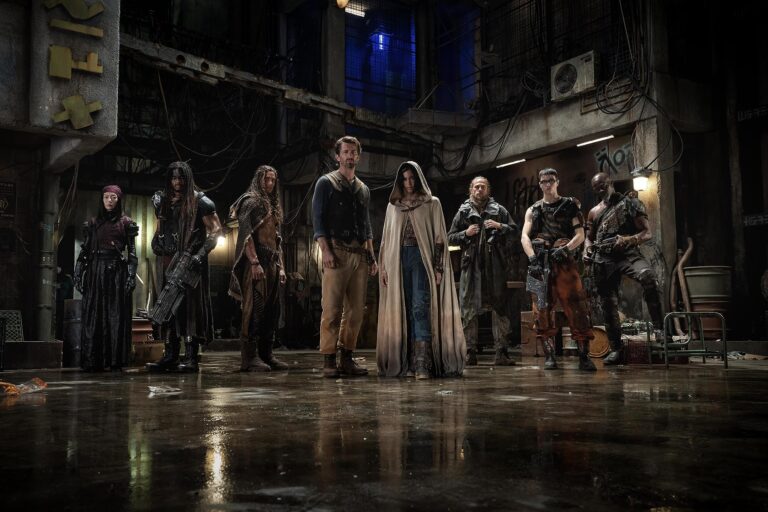Once upon a time, Zack Snyder pitched Lucasfilm on a new entry into the Star Wars franchise that he described as “Seven Samurai in space,” a concept which the studio — newly acquired by Disney — ultimately passed on. Having spent the better part of the past decade developing the idea, one might have expected Snyder to have fleshed out the concept beyond that initial logline. But Rebel Moon – Part One: A Child of Fire, the first installment of Snyder’s “original” sci-fi epic, arrives as a 134-minute slog through endless references, homages and outright thefts, an embarrassingly derivative work that indulges the director’s worst tendencies and lays bare his weaknesses as a storyteller.
On the distant moon of Veldt, a peaceful farming village is thrown into disarray by the sudden arrival of a warship commanded by Admiral Atticus Noble (Ed Skrein), who cheerfully murders village leader Sindri (a woefully miscast Corey Stoll) and promises to return in 10 weeks to claim the upcoming harvest for himself and his troops. Kora (Sofia Boutella), an outsider on the run from the forces of the Motherworld who crash-landed on Veldt several years before, initially plans to flee, but when the detachment of soldiers Noble left behind attempts to rape a local girl — yes, it’s 2023 and we’re still using sexual assault as a plot catalyst — Kora cuts them down. Setting off with harvest overseer Gunnar (Michiel Huisman) in tow, Kora vows to recruit warriors who will return to train the villagers how to defend themselves. Does any of this sound familiar?
From the opening shot of a star destroyer Dreadnought drifting through space, it feels as though Snyder never made peace with not being asked to join the galaxy far, far away; the plot may crib heavily from Akira Kurosawa’s beloved samurai epic, but it steals borrows just as liberally from George Lucas. If you have to choose one film where the protagonists visit a cantina full of shady alien creatures and hire a scoundrel pilot to ferry them across the galaxy in a rickety smuggling vessel to rendezvous with leaders of a rebellion, you’re better off with the original; Star Wars handled this material much better more than 45 years ago. Characters are merely archetypes — the disgraced general, the mournful assassin, the fallen prince — whose backstories and motivations are divulged through dialogue they typically deliver themselves; at least Kora gets a few action-packed flashbacks to go along with the clunky exposition. “I’m only telling you this so you know who I am.”
Snyder’s love for shallow depth of field is on full display here, as is a predilection for lens flare that puts J.J. Abrams’ Star Trek reboot to shame. But it’s the obsession with slow motion and speed ramping that continues to be his most prominent visual flourish, and the director’s increasing reliance on this technique leaves every action sequence feeling bland and uninspired. Seeing the beads of sweat on Kora’s brow or the muzzle flashes from her space-age assault rifle as she charges into battle might be cool once, but more often than not it feels like Snyder is going back to the well because he doesn’t know what else to do. Even diehard fans of the director’s oeuvre — the sort of stalwarts that delight in waging campaigns of harassment toward anyone who doesn’t believe the four-hour cut of Justice League was the greatest film of all time — may find themselves tiring of the gimmick by the time Rebel Moon – Part One mercifully comes to an end.
Being the first installment of a larger narrative, it’s expected that numerous plot threads are left dangling and ready to be tied up when Rebel Moon – Part Two: The Scargiver debuts in April 2024. But with shallow characters, a galaxy that feels almost lifeless, a narrative that’s been recycled and remixed from other (better) films, and a directorial style that has barely progressed since 300, what reason do we have to come back for more? Perhaps, now that all the table setting has been completed, the good stuff will arrive in the second half of the story; but I won’t be holding my breath.

